
7 Ways to Improve Your Rowing Stroke

While becoming an efficient rower will probably never be as exciting to the average CrossFit athlete as getting your first pull-up, muscle-up, or a new clean and jerk PR, it certainly can help you handle the sexier CrossFit movements more effectively within the framework of a multi-modal conditioning workout.
For example, let's say a workout involves rowing and rope climbs: If employ an early arm bend on the rowing machine, you will end up using your biceps way too much, and then the rope climbs will feel way harder than they should.
So if you care about rope climbs, and other movements that are cooler than rowing, it's time to take rowing seriously.
7 Common Rowing Mistakes to Avoid
1. Early arm bend
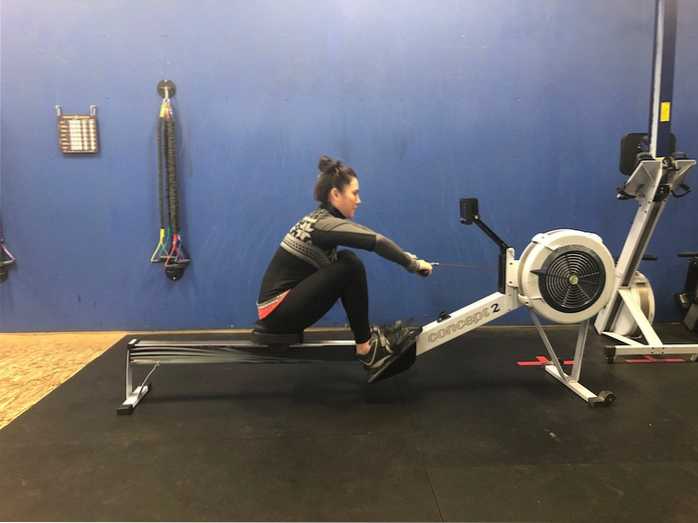
I just alluded to this one, but basically it's when your arms bend before they have cleared your knees on the drive portion of the stroke.
At the start of the drive, your legs should be doing all of the work, while you arms remain straight. In fact, your upper body should feel like it's suspending off the handle.
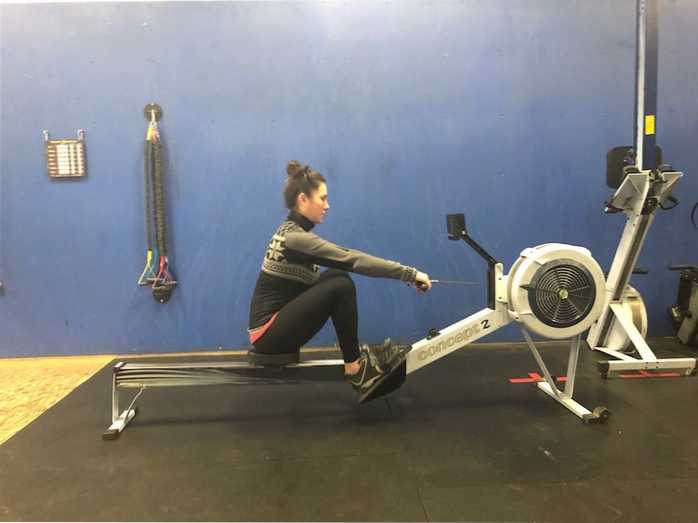
After you drive your knees down and you have begun to open up your back, then and only then should you start using your lats to pull the handle to your body.
2. Pausing the handle
There's a tendency among amateur rowers to finish the stroke with the handle pulled to their chest and then stop for a couple seconds. This is followed by a really sudden movement, where the person pushes the handle back out really fast in order to catch up to their legs.
I get it: It feels like this pause at the finish gives you a moment to take a breath and relax, but all it's doing is stopping the boat. Then the super fast straightening of the arms contributes to even further inefficiency.
What you should do instead: Keep the handle moving in and out at the same speed and in one fluid motion.
3. Too much lay back
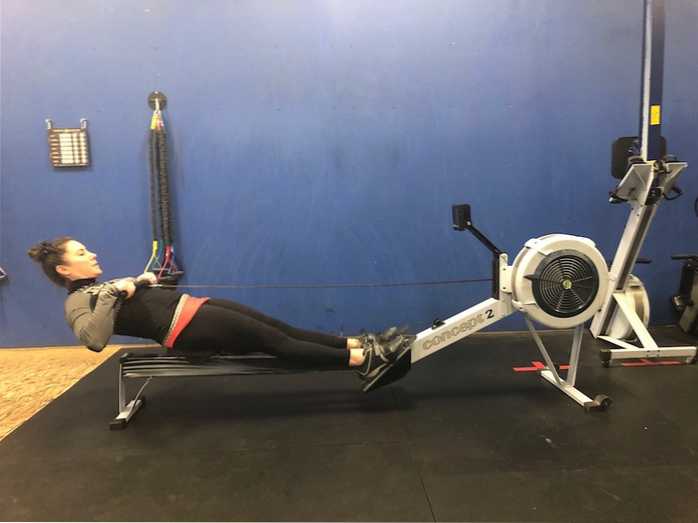
At the finish of the stroke you should definitely be leaning back-at about a 45 degree angle-but you should not be completely horizontal so that you have to do a full sit-up on your recovery.
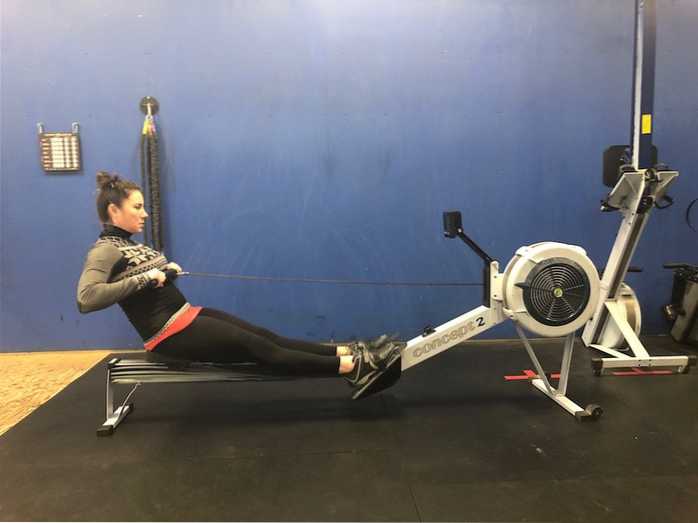
I see this a lot: Laying back way too much on each stroke. While you do want to ensure you're getting length on each stroke, you don't need to be burning out your abs out so much while rowing. If a rowing workout were paired up with something like toes-to-bars and thrusters, my guess is your core will be a lot more fried than it needs to be if you're laying back too much.
4. No body swing
As your elbows extend back out after you finish your stroke, your body should follow by swinging back over until your shoulders are once again in front of your hips.
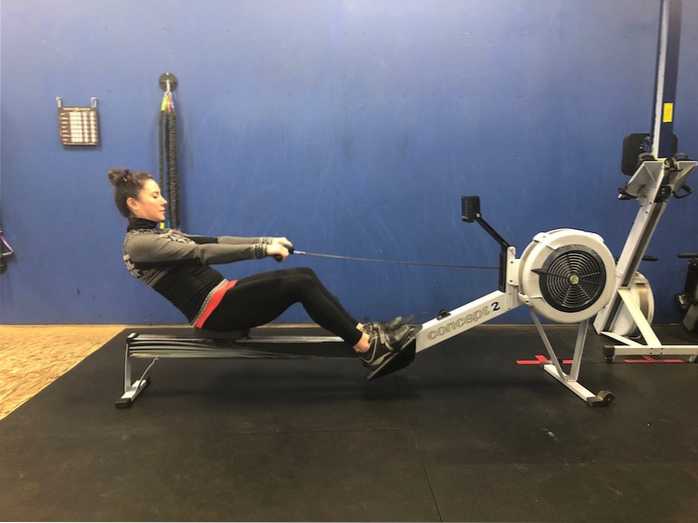
I often see this step missed completely. The result is the person is still leaning back-shoulders are still behind their hips-when they're almost back at the catch ready for the next stroke. Then, in a sudden jolt, they whip their shoulders and body forward right before they reach the catch. Again, this disrupts the fluidity and fluid sequence of the stroke.
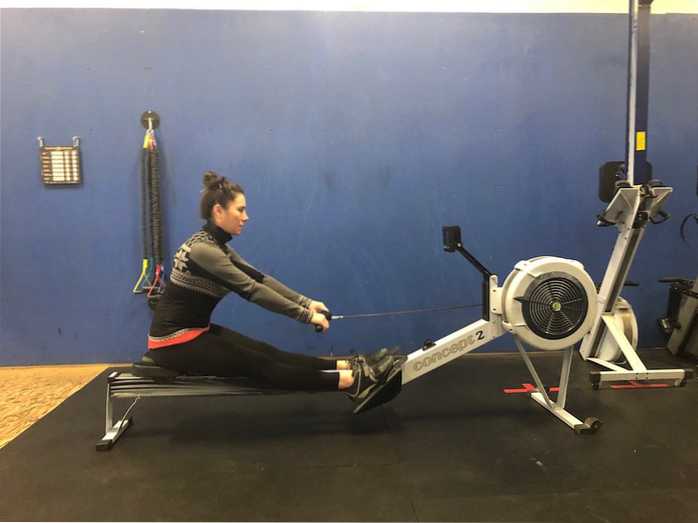
5. Early knee bend on the recovery
This might be the most common mistake I see: Bending your knees the moment you finish the stroke, before you straighten your arms back out and swing your body forward.
As a result, when your hands hands reach your knees, you're forced to lift the handle up and over your knees, violating one of the most important aspects of rowing: a linear stroke.
Bottom line, don't be in a rush with the legs. Extend your arms back out first, then swing your body forward, and then start to bend your knees as you use your hamstrings to control your speed back to the catch.
6. Rushing the top quarter of the slide
By top quarter of the slide, I mean that final little bit of the stroke during your recovery before you begin your next stroke.
Generally amateur rowers speed up in this portion of the stroke, which is the exact opposite of what we want. As alluded to above, use your hamstrings to slow down the top quarter of the slide before you get into your next stroke. This will also give you a moment to breathe and relax before the next hard stroke.
7. Too many strokes
An Olympic men's eight might row at 36 to 38 strokes per minute. But it took them years to be able to row efficiently at this time of speed.
Though it depends on the piece, I wouldn't recommend CrossFit athletes ever going above 32 strokes per minute, and that would be during something like an all-out 500 meter sprint.
If you're rowing at 32 to 35 strokes per minute during a 15-minute multi-modal conditioning workout, on the other hand, my guess is you're probably getting yourself way more tired on the rowing machine than you need to be.
For most multi-modal pieces, I would recommend most CrossFit athletes holding between 24 and 28 strokes per minute, depending on the person's skill and fitness level, and around 28 to 30 strokes per minute during a 1 or 2 km time trial type of piece.
The more efficient and fit you are, the higher you will eventually be able to stroke, but if you have seen 40 strokes per minute on your screen at any time, my guess is you weren't rowing very efficiently.
Featured image: Oleksandr Zamuruiev/Shutterstock



Nimeni nu a comentat acest articol încă.